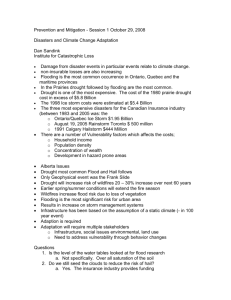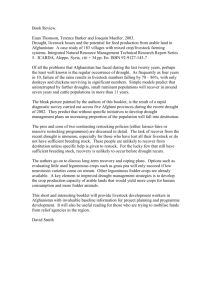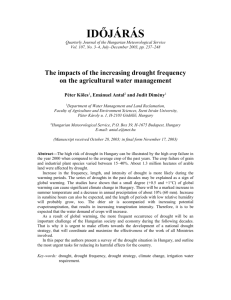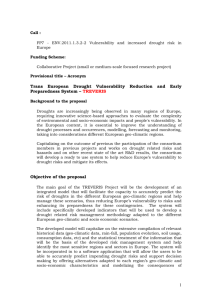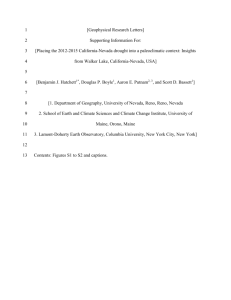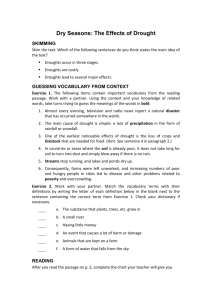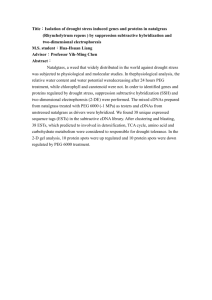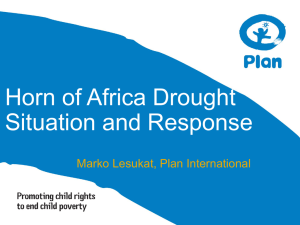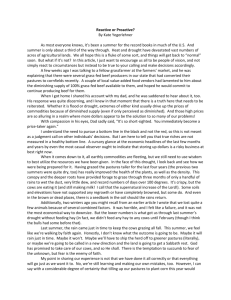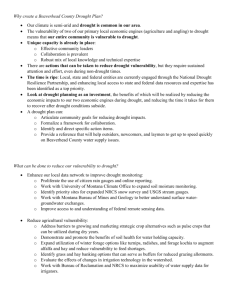Title - ESRI Eastern Africa
advertisement
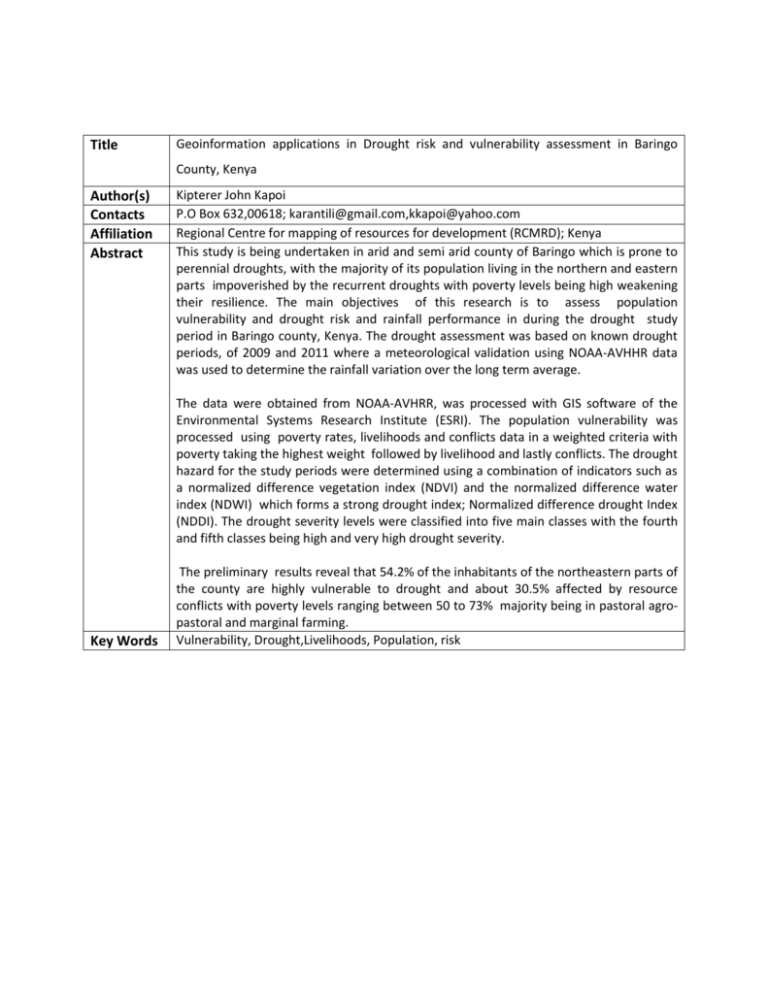
Title Geoinformation applications in Drought risk and vulnerability assessment in Baringo County, Kenya Author(s) Contacts Affiliation Abstract Kipterer John Kapoi P.O Box 632,00618; karantili@gmail.com,kkapoi@yahoo.com Regional Centre for mapping of resources for development (RCMRD); Kenya This study is being undertaken in arid and semi arid county of Baringo which is prone to perennial droughts, with the majority of its population living in the northern and eastern parts impoverished by the recurrent droughts with poverty levels being high weakening their resilience. The main objectives of this research is to assess population vulnerability and drought risk and rainfall performance in during the drought study period in Baringo county, Kenya. The drought assessment was based on known drought periods, of 2009 and 2011 where a meteorological validation using NOAA-AVHHR data was used to determine the rainfall variation over the long term average. The data were obtained from NOAA-AVHRR, was processed with GIS software of the Environmental Systems Research Institute (ESRI). The population vulnerability was processed using poverty rates, livelihoods and conflicts data in a weighted criteria with poverty taking the highest weight followed by livelihood and lastly conflicts. The drought hazard for the study periods were determined using a combination of indicators such as a normalized difference vegetation index (NDVI) and the normalized difference water index (NDWI) which forms a strong drought index; Normalized difference drought Index (NDDI). The drought severity levels were classified into five main classes with the fourth and fifth classes being high and very high drought severity. Key Words The preliminary results reveal that 54.2% of the inhabitants of the northeastern parts of the county are highly vulnerable to drought and about 30.5% affected by resource conflicts with poverty levels ranging between 50 to 73% majority being in pastoral agropastoral and marginal farming. Vulnerability, Drought,Livelihoods, Population, risk
